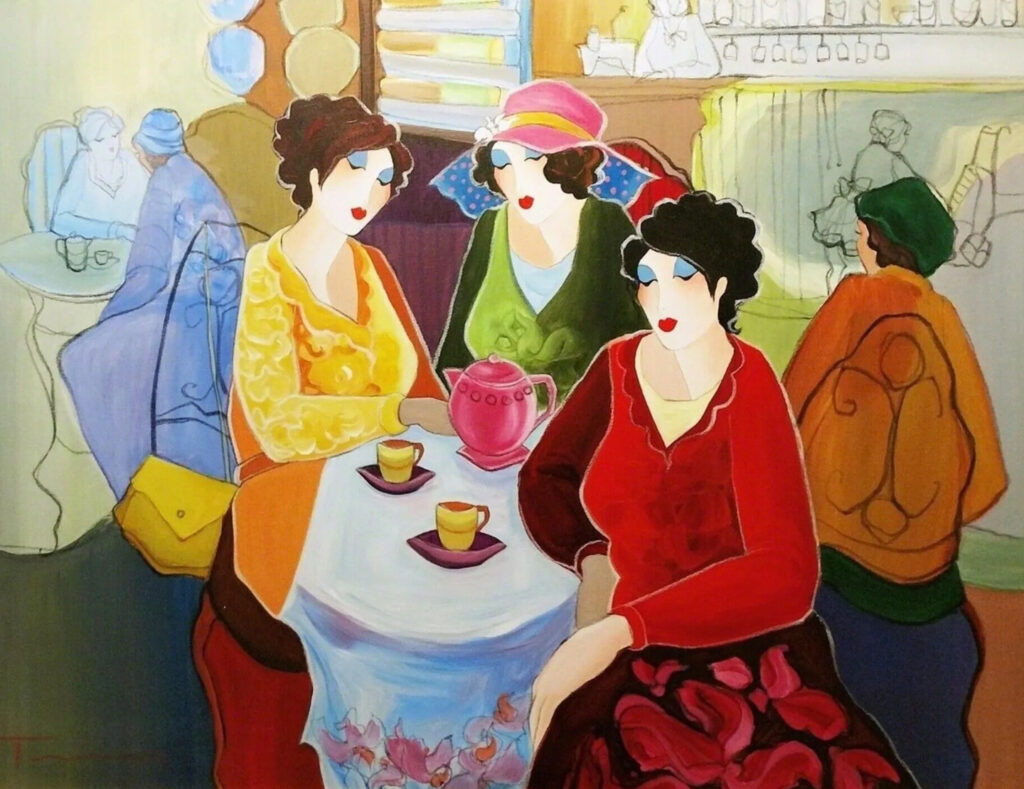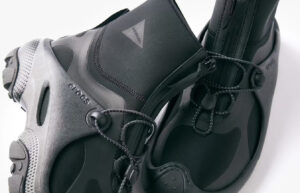In a world that has so often portrayed femininity through the prism of patriarchal projections or formulaic depictions, Itzchak Tarkay’s women sit poised and self-contained, wreathed in painterly quietude. They do not perform. They do not explain. They exist — in languid contemplation, in abstract interiors, in places half-remembered and half-imagined. Tarkay’s acrylic-on-canvas compositions, though often stylized and deceptively simple, offer a profound meditation on presence — a feminine presence made autonomous through color, posture, and silence.
Born in 1935 in Subotica, then part of Yugoslavia, and having survived internment during the Holocaust before emigrating to Israel, Tarkay brought with him an internal palette of hardship, resilience, and wonder. This unique confluence of biography and vision would later bloom into a distinctive visual language — one that married the lyrical quiet of French Impressionism with the emotive color play of Matisse and the compositional boldness of Modigliani. By the time he began exhibiting in the United States in the late 20th century, Tarkay had crystallized a signature style that would make his name synonymous with modern figurative painting.
To engage Tarkay’s paintings is to enter a world where color replaces narrative and mood supplants action. There are no climaxes or resolutions in his scenes, only the drifting moments between. Women lounge on divans, sip tea at invisible cafés, or sit with their hands draped lightly across their laps. The walls behind them are flooded with abstract motifs — floral patterns, window panes, tapestries, all rendered with flattened perspective and rich chromatic vibrancy. These interior spaces are not realistic but psychological; Tarkay’s brush translates emotion, not architecture.
Yet what makes Tarkay’s work enduring is not simply its aesthetic consistency or commercial popularity. It is the quiet dignity of his subjects. In contrast to the objectified or eroticized female form that has defined much of Western art history, Tarkay’s women resist consumption. They do not beckon the viewer. They are often turned inward, caught in thought, rarely making eye contact with the canvas’s edge. Their beauty is not performative but elemental — shaped by lines and moods rather than male desire.
This inwardness — this refusal to perform — places Tarkay in subtle conversation with other artists who have used figuration to explore identity and autonomy. There are echoes of Édouard Vuillard’s domestic intimacy, of Gustav Klimt’s decorative opulence, and even of Pierre Bonnard’s melancholic interiors. Yet Tarkay’s figures seem somehow more modern, not merely in technique but in temperament. They are portraits of a postmodern womanhood: aware, self-possessed, and uninterested in spectacle.
Acrylic, Tarkay’s medium of choice, further reinforces this thematic clarity. Where oil might offer too much sumptuousness or fluidity, acrylic gives Tarkay the precision he craves — fast drying, allowing for distinct fields of color and confident, uninterrupted lines. In his hands, the medium becomes a tool of restraint rather than indulgence. His palette is bold but never chaotic; red, cobalt, ochre, and forest green often appear side-by-side, separated by firm contour lines that evoke stained glass or mosaic. These zones of color create not just visual harmony but narrative boundaries — delineating mood, emotion, and interiority with startling economy.
Critics have at times struggled to place Tarkay within the hierarchy of high art, dismissing his work as decorative or sentimental. This is a misreading. His paintings, while undeniably decorative, are not kitsch. They do not pander, nor do they rely on nostalgia or sentimentality to engage the viewer. Rather, they offer an alternative mode of seeing — one that prioritizes beauty, yes, but also stillness, privacy, and the unspoken inner life of his subjects. In an age saturated with spectacle and noise, Tarkay’s canvases whisper.
Part of Tarkay’s success — and controversy — can also be traced to his crossover appeal. His works were not confined to galleries but circulated widely through reproductions, serigraphs, and prints, making him a household name among collectors. This democratization of aesthetic experience, once seen as diluting the aura of high art, today feels prophetic. Tarkay anticipated a world in which images travel faster than provenance, in which beauty is no longer the guarded territory of elites but a shared, open field.
Still, for all their accessibility, Tarkay’s works are anything but superficial. They beckon sustained attention. Each canvas is layered with gesture and texture: the swirl of a dress hem, the shading of a cheekbone, the rhythmic curve of a chair arm. His lines, though often stylized, are deeply expressive. A single elbow resting on a table can convey entire emotional states — languor, fatigue, detachment, or longing. These microexpressions of the body become the true narrative engine of his art.
And always, there is the gaze — or more precisely, the lack of one. Tarkay’s women do not meet our eyes. They look elsewhere, inward or to each other, as if inhabiting a world beyond ours. This refusal to be seen — or to acknowledge the viewer — is radical in its quietude. It denies the transactional nature of visual consumption. It suggests a different kind of spectatorship, one rooted not in control or possession but in observation and empathy.
There is also something cinematic about Tarkay’s world — not in the sense of motion or plot, but in framing and mise-en-scène. His women are always perfectly placed, their limbs and garments forming visual rhythms that guide the eye across the canvas like the tracking of a camera. Backgrounds, though abstracted, are meticulously balanced. There’s a sense of time suspended — the eternal pause before dialogue, the ambient hum of a still room. Tarkay paints not the scene itself but the atmosphere around it.
In the years following his American success, Tarkay continued to exhibit widely until his passing in 2012. While his aesthetic remained remarkably consistent, it never grew stale. Like a jazz musician riffing on a theme, Tarkay explored infinite variations within his visual vocabulary. Sometimes his figures grew more angular, sometimes more fluid. Sometimes the palette softened into pastels, other times it burned with saturation. But the spirit — introspective, elegant, emotionally precise — never wavered.
Today, Tarkay’s works remain sought after in both private and institutional collections. They appear in hotel lobbies and home salons, in museum retrospectives and online auctions. But wherever they surface, they bring with them the same invitation: to slow down, to observe without intrusion, to witness the quiet revolution of feminine stillness rendered in color and line.
In an era dominated by speed, by the algorithmic churn of images and identities, Tarkay’s work reminds us of the power of the pause. His women do not scream or shout. They do not demand attention. Instead, they ask us to sit — to stay awhile — to listen not to noise, but to presence. And in that presence, we find something rare: a moment of contemplative grace.
No comments yet.








